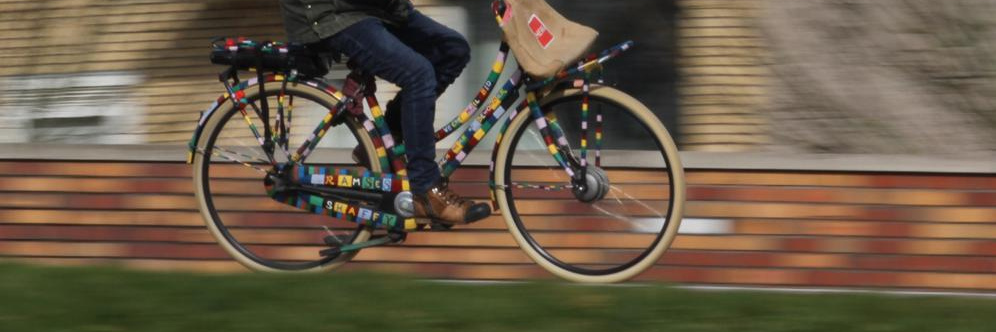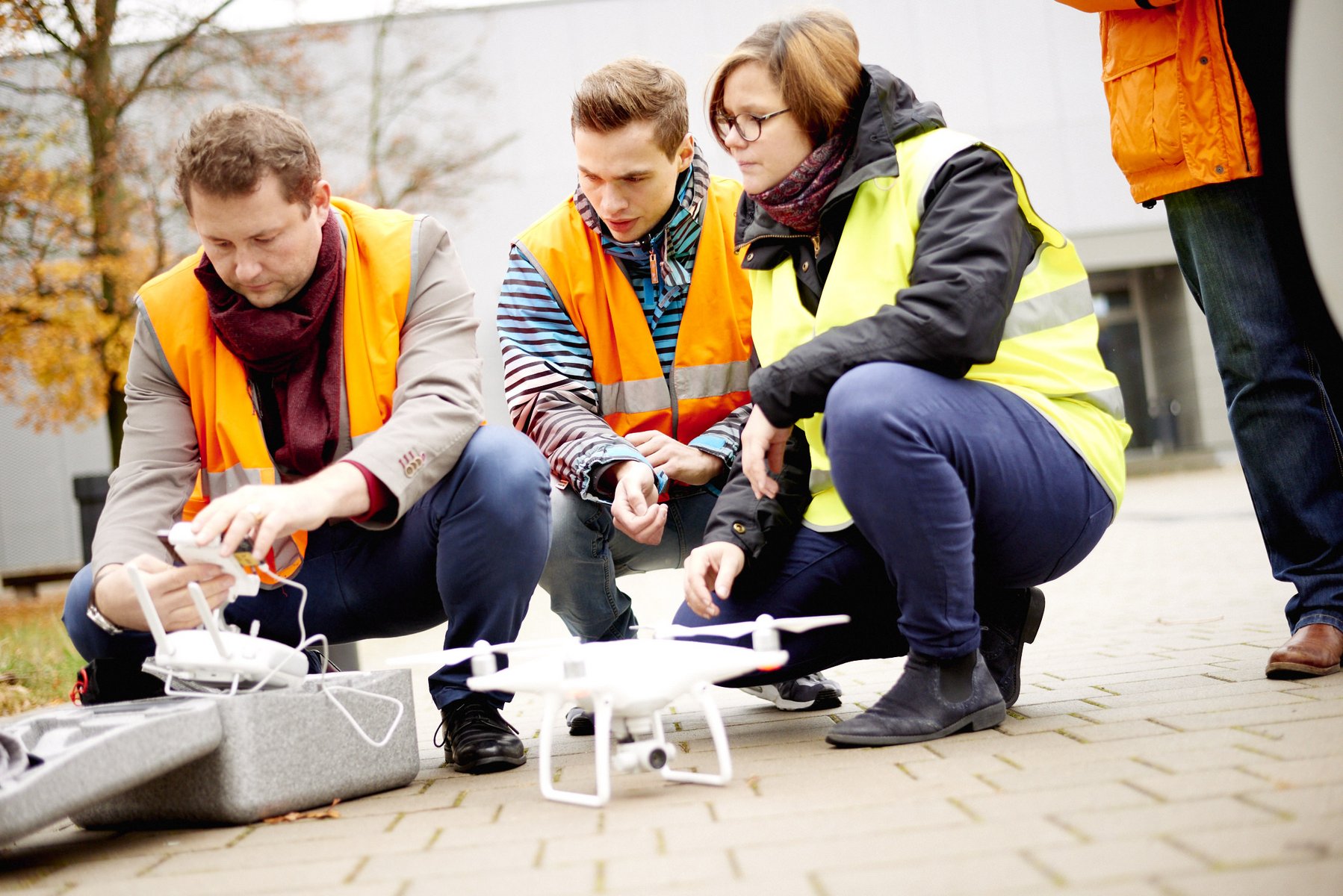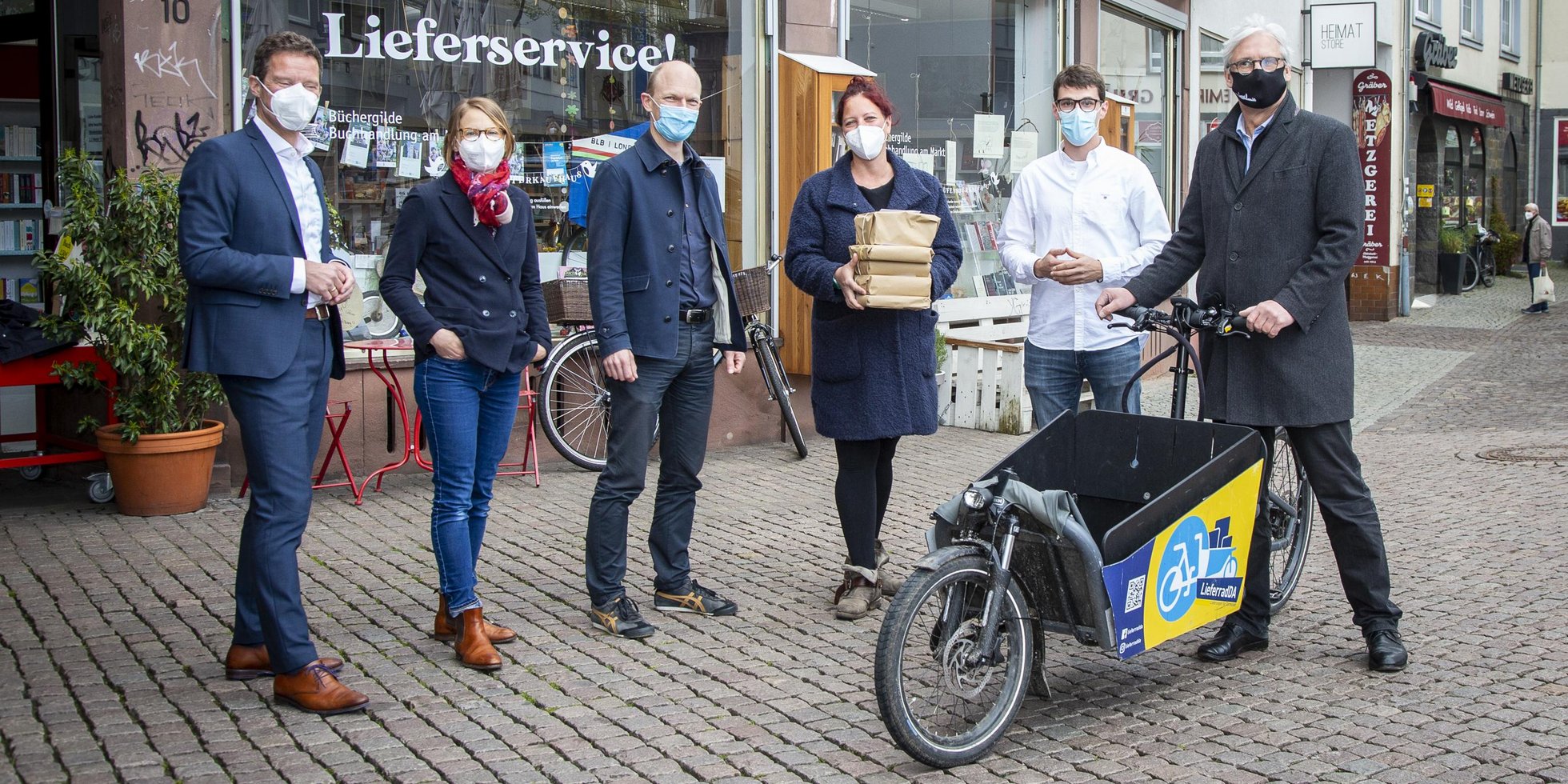
Safe mobility with less energy and emissions
Transport research at the Department of Civil and Environmental Engineering at Darmstadt University of Applied Sciences focuses on the mobility transition, road safety and (especially urban) commercial transport. The role of transport infrastructure for these topics is central to this. We work closely with other departments, external stakeholders and other universities in the region on an interdisciplinary and transdisciplinary basis. Our projects are very practice-oriented. We are driven and motivated by the benefits for our society.
Backgrounds
The proportion of greenhouse gas emissions from the transport sector in Germany is currently around 20%. This does not include emissions from vehicle and infrastructure production and international air and sea traffic. Transport is therefore currently a major driver of climate change and requires considerable resources. At the same time, mobility is indispensable for our society.
It is already possible to switch to emission-free drives in (almost) all areas of transportation. Depending on the drive technology, however, this requires considerable amounts of renewable energy. As the provision of renewable energy is already a major technical, economic and social challenge even without the transport sector, decarbonization will be faster and easier the less energy is required. Vehicle production will also be associated with greenhouse gas emissions for years to come. The mobility transition aims to enable mobility without greenhouse gas emissions and with the lowest possible energy consumption.
While the drive transition only aims to replace drive technology (e.g. electric drives instead of fossil combustion engines) in order to achieve the decarbonization of transport, the mobility transition also aims to leverage efficiency and savings potential. In addition to the drive turnaround, this also includes shifting journeys to more efficient and climate-friendly modes of transport (e.g. from cars to public transport), shortening journeys (e.g. through the city of short distances/5-minute cities, sustainable urban development), but also reducing the need for transport by completing tasks at home or doing without or bundling journeys. The mobility turnaround thus aims to change the behavior of the population and companies without necessarily restricting mobility.
Sustainable transport infrastructure also means that as few people as possible are harmed. The declared goal is "Vision Zero", i.e. the vision of traffic without fatalities. However, road safety work goes beyond the prevention of serious accidents and also aims to improve perceived safety. Road safety work includes both prevention (e.g. safety audits of existing and planned roads) and the analysis and rectification of identified deficiencies (traffic inspections, accident commissions). As cycling and walking are particularly at risk and increasingly affected by serious accidents, road safety work focuses on this group in particular. In this way, road safety work also contributes to the mobility transition.
Transport research at the faculty

Together with practitioners, we are researching safe infrastructure that is also attractive for cycling and walking. For example, we have intensively supported the development of the high-speed cycle link (RSV) from Frankfurt/Main to Darmstadt and are continuing this work with other RSVs. We are constantly evaluating traffic trials, such as the protected cycle lanes in Darmstadt. How these cycle lanes can be continued at junctions is a central question in research into so-called protected intersections. Bicycle lanes, protected lanes and the barrier-free design of traffic facilities are also part of our portfolio.

Public transport is the backbone of the mobility transition. It is available to everyone and can transport many people very efficiently, even over long distances. In addition to designing an attractive infrastructure for public transport (routes, stops, intermodal connection points, mobility stations), we are also looking at alternative mobility options such as the HeinerLiner or urban cable cars.
We are also developing two innovative training courses for employees in the mobility sector as part of the InnoVET joint project UpTrain. The content of the training courses is taught in a practical manner at various learning locations such as industry, transport companies and universities.
Commercial traffic already accounts for around a third of the traffic volume in cities today, and the trend is rising. The resulting opportunities for prosperity and the economy are also accompanied by challenges such as emissions and land consumption. These challenges must be met with sustainable concepts such as bundling, cargo bike deliveries or pick-up points for goods (e.g. parcel stations). We work closely with external players and try out new things, for example with the bicycle delivery service LieferradDA.
Transportation is integrated into all of the department's degree courses and is taught at undergraduate level. We cover the basics of traffic generation and mobility behavior in order to focus on all aspects of the design and operation of transport infrastructures in compulsory and elective modules. Urban traffic is covered as well as out-of-town traffic, public and individual traffic. Surveying, GIS and traffic engineering round off the program.

Our work is characterized by high practical relevance, interdisciplinary (networking across the boundaries of disciplines, cooperation with other departments, e.g. Department of Economics, Department of Computer Science) and transdisciplinary work (involvement of external stakeholders) and close links with teaching . We involve our students in projects through final theses and project work or as student assistants, while the research results flow directly into teaching. We like to try out new things and are well networked in research committees (e.g. FGSV, WCTRS) and with stakeholders in the region.
Contact us
Communication Office: A12, 111
+49.6151.533-68177
juergen.follmann@h-da.de
Short profile
Educational Area
Verkehrswesen
Communication Office: A12, 210
+49.6151.533-68164
roland.weber@h-da.de
Educational Area
Verkehrssicherheit, Straßenentwurf, Geodäsie
Communication Office: A12, 208
+49.6151.533-68142
axel.wolfermann@h-da.de
Short profile
ORCID: 0000-0002-6571-9791
Educational Area
Verkehrswesen
